
No. 70 or LXX Squadron RAF operates the Airbus A400M Atlas C.1 to provide strategic air transport worldwide and is based at RAF Brize Norton.

No. 220 Squadron of the Royal Air Force (RAF) was founded in 1918 and disbanded in 1963 after four separate periods of service. The squadron saw service in both the First and Second World Wars, as a maritime patrol unit, and finally as part of Britain's strategic nuclear deterrent.

No. 3 Group RAF of the Royal Air Force was an RAF group first active in 1918, again between 1923 and 1926, then as part of RAF Bomber Command from 1936 to 1967, and recently part of RAF Strike Command from 2000 until it disbanded on 1 April 2006.
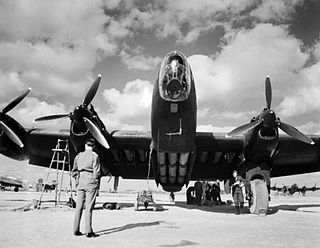
No. 148 Squadron was a squadron of the Royal Air Force disbanded and re-established several times since the First World War, until its dissolution on 1 May 1965. During the Second World War, the squadron operated as a Special Duties squadron performing partisan supply missions and working closely with the Special Operations Executive for agent drop and pick-up operations.

No. 40 Squadron of the Royal Air Force was formed in 1916 at Gosport as No. 40 Squadron Royal Flying Corps and was disbanded for the last time in 1957. The squadron also included many non-British members, including volunteers from the Royal Australian Air Force and Royal Canadian Air Force.
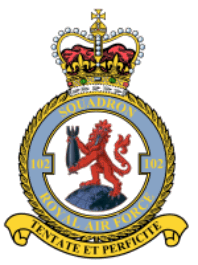
No. 102 Squadron was a Royal Air Force night bomber squadron in the First World War and a heavy bomber squadron in the Second World War. After the war it flew briefly as a transport squadron before being reformed a light bomber unit with the Second Tactical Air Force within RAF Germany. Its last existence was as a Thor strategic missile unit.
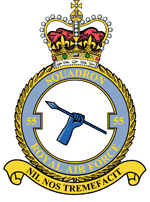
Number 55 Squadron was a flying squadron of the Royal Air Force (RAF). First formed in April 1917, the squadron saw action on the Western Front during the First World War. Based in the Middle East during the interwar period and the Second World War, No. 55 Squadron saw action over Iraq, Egypt, Libya and Italy. Between 1960 and 1993, the unit flew the Handley Page Victor. Initially on the Victor B.1A before becoming a tanker squadron in 1965 with the Victor B(K).1A/K.1/K.1A before converting to the Victor K.2 in 1975. Disbanding in October 1993, No. 55 Squadron were the last RAF unit to operate the Victor. Between 1996 and 2011, No. 55(Reserve) Squadron operated the Hawker Siddeley Dominie T.1 from RAF Cranwell, Lincolnshire, helping to train navigators for the RAF.

No. 97 Squadron, was a Royal Air Force squadron formed on 1 December 1917 at Waddington, Lincolnshire.
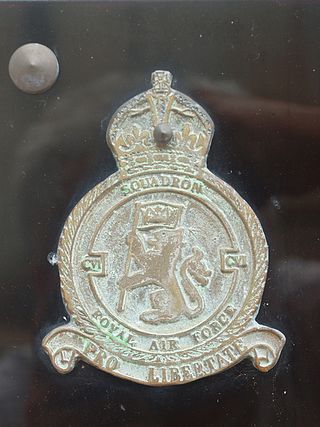
No. 106 Squadron RAF was a Royal Flying Corps and Royal Air Force squadron active from 1917 until 1919, throughout World War II and during the Cold War from 1959 until 1963.
No. 113 Squadron began service in 1917 with the Egyptian Expeditionary Force commanded by General Edmund Allenby. Initially, the squadron was a unit of the Royal Flying Corps, serving during the Sinai and Palestine Campaign and as a reconnaissance, army cooperation, bomber, fighter, transport and missile operation squadron during its existence.

No. 104 Squadron RAF is a former squadron of the British Royal Air Force.
No. 77 Squadron RAF was a squadron of the Royal Air Force which was active in various incarnations between 1916 and 1963.

No. 223 Squadron RAF was a squadron of the Royal Air Force. Originally formed as part of the Royal Naval Air Service (RNAS), the Squadron flew in both World Wars.
No. 218 Squadron RAF was a squadron of the Royal Air Force. It was also known as No 218 Squadron after the Governor of the Gold Coast and people of the Gold Coast officially adopted the squadron.
No. 98 Squadron was a Royal Air Force bomber squadron during World War I and World War II. It flew fighter-bombers post-war, and converted to fighters in 1955. Reformed as a ballistic missile unit between 1959 and 1963, its final incarnation was as a radar calibration unit. It was disbanded in 1976.
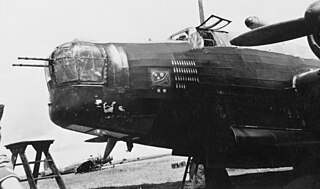
No. 142 Squadron was a flying squadron of the Royal Air Force (RAF). It was formed at RFC Ismailia in Egypt during the First World War. Disbanded in 1920, then re-formed in 1934, 142 Squadron in France, then over occupied Western Europe. In 1942, it was transferred to North Africa where it took part in the North African and Italian campaigns. After the war, it was transformed into a Strategic Missile being eventually disbanded in 1963.
No. 254 Squadron of the Royal Air Force was the designation of a number of units formed throughout the 20th century.

No. 226 Squadron RAF was a unit of the British Royal Air Force that existed as a bomber squadron during the First and Second World Wars, and as part of the UK's nuclear ballistic missile force in the early 1960s.
No. 240 Squadron RAF was a Royal Air Force flying boat and seaplane squadron during World War I, World War II and up to 1959. It was then reformed as a strategic missile squadron, serving thus till 1963.

No. 130 Squadron of the Royal Air Force was a Second World War and Cold War fighter squadron, and later a strategic missile squadron.
















